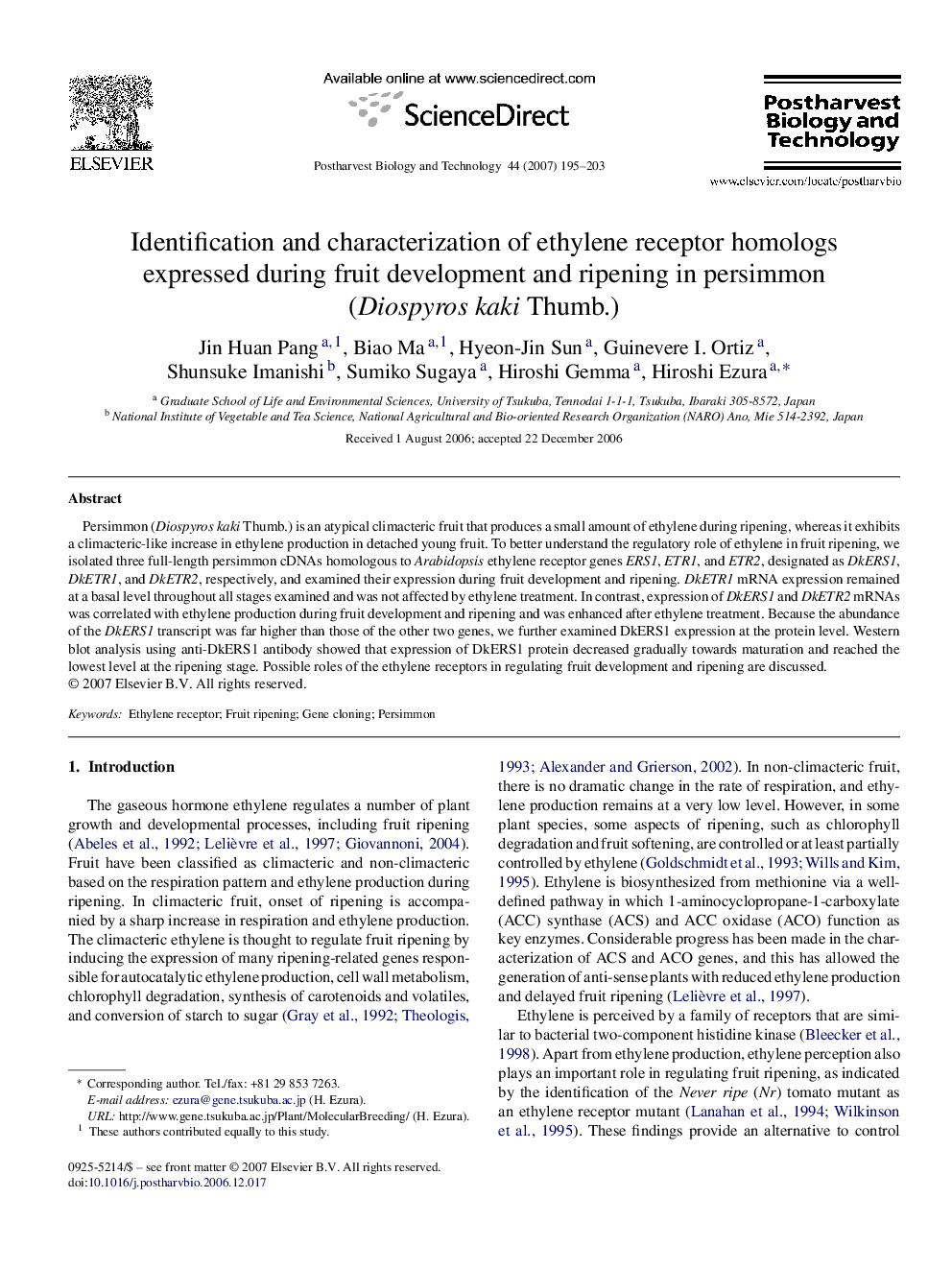| Article ID | Journal | Published Year | Pages | File Type |
|---|---|---|---|---|
| 4519634 | Postharvest Biology and Technology | 2007 | 9 Pages |
Persimmon (Diospyros kaki Thumb.) is an atypical climacteric fruit that produces a small amount of ethylene during ripening, whereas it exhibits a climacteric-like increase in ethylene production in detached young fruit. To better understand the regulatory role of ethylene in fruit ripening, we isolated three full-length persimmon cDNAs homologous to Arabidopsis ethylene receptor genes ERS1, ETR1, and ETR2, designated as DkERS1, DkETR1, and DkETR2, respectively, and examined their expression during fruit development and ripening. DkETR1 mRNA expression remained at a basal level throughout all stages examined and was not affected by ethylene treatment. In contrast, expression of DkERS1 and DkETR2 mRNAs was correlated with ethylene production during fruit development and ripening and was enhanced after ethylene treatment. Because the abundance of the DkERS1 transcript was far higher than those of the other two genes, we further examined DkERS1 expression at the protein level. Western blot analysis using anti-DkERS1 antibody showed that expression of DkERS1 protein decreased gradually towards maturation and reached the lowest level at the ripening stage. Possible roles of the ethylene receptors in regulating fruit development and ripening are discussed.
